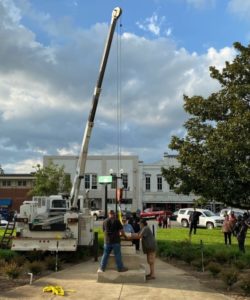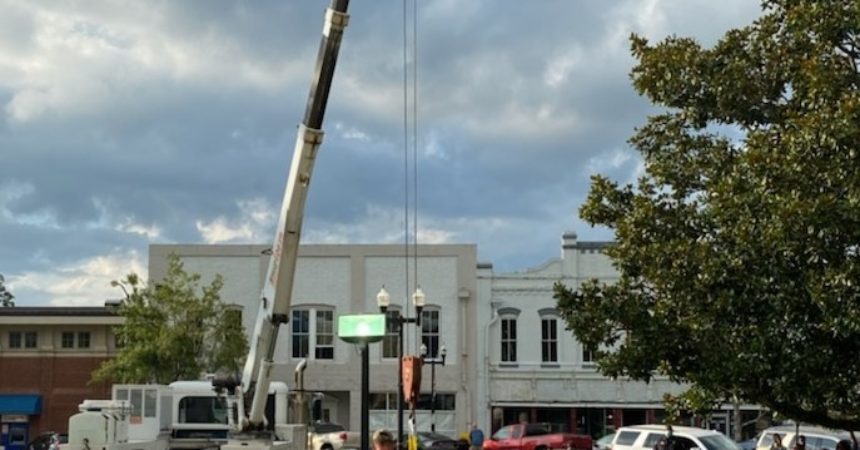FSU student calls for CK Steele honor on campus
Gadsden County Commission agrees to remove Confederate monument from courthouse
Making yet another call for the removal of racially offensive statues and names, a former member of FSU student government is calling for the university to pay homage to civil rights icon CK Steele instead.
“I don’t think there is a better person in our community that represents what we would want, than the legacy of CK Steele,” said Khamare Garner, a fifth-year political science and history major.
Garner said he’s been circulating a petition calling for the removal of a statue of Francis Eppes from the campus. He wasn’t anticipating more than 100 signatures on the petition that he said had more than 2,000 people supporting it as of last Friday.
He’s also asked members of the clergy to support his petition, which also calls for the renaming of Eppes Hall, near where the statue has been sitting since it was removed from in front of the Westcott Building in 2018.

County workers used a crane to remove a Confederate monument from in front the Quincy Courthouse last Thursday evening.
Photo by Charles Gee
FSU president John Thrasher was not available to respond to the latest call over the Eppes statue and other naming recognition of figures that supported segregation or slavery. When student activists balked at the statue of Eppes, a former Tallahassee mayor and slave owner, Thrasher formed an advisory panel in 2017 to recommend resolution to the issue.
Garner’s call comes at a time when protesters across the country are taking removal of symbols that offend Blacks into their own hands. Images that keep alive memories of slavery and Confederate soldiers were also being toppled globally.
Closer to home, the Gadsden County Commission voted unanimously to remove a monument that stood in front of the Quincy Courthouse for more than 100 years. It was removed immediately and placed in storage after the five-member board made the decision.

Gadsden County Commissioner Brenda Holt has been calling for removal of the Confederate monument since 2008.
Photo special to the Outlook
Attorney Charles Gee, a FAMU law school graduate, had been behind a petition to have the monument removed that celebrated Confederate soldiers from the Civil War era. More than 4,000 people had signed the petition by the time he submitted it to the commission for its emergency meeting last Thursday.
The monument was in place since 1884.
“That’s too long to depress a group,” said Gadsden County Commissioner Brenda Holt, who led the vote for removal. “I told them 135 years of suffering is enough.”
The monument was removed after a third try by Holt, who has been trying to have it moved from in front the downtown courthouse. Her first attempt was in 2008, she said.

Khamare Garner is leading the latest call for FSU to remove a Francis Eppes statue.
Photo courtesy Khamare Garner
“It just felt exhilarating in a sense,” Gee said of watching the monument being removed by a crane. “A big weight has been lifted. It feels like one layer of pressure is being lifted and we don’t have to glorify that symbol day in and day out.
“It’s just the hypocrisy of that. I decided to speak up about it and a lot of people feel like I did because 4,000 signed the petition.”
Holt said she had to keep up her fight for removal of the monument because “it was depressing to a lot of Black people here.”
Gadsden is the only Florida county with a Black majority. But the Quincy community has been divided over the monument, Holt said.
“At first I think people were very skeptical about it,” she said. “Some people were afraid because they didn’t want to upset the people they work with and their friends and neighbors.”
The split in Gadsden County is centered around the argument that removing the monument is destroying history. Supporters of the Eppes statue have been making a similar case.
But Garner insisted that the argument is on the wrong side of history.
“By having the statue there you’re also ignoring (Black) history,” he said. “You’re only seeing it from one perspective. You’re not seeing it from the perspective of the millions of African slaves who were lynched. You’re ignoring that part of our history by allowing that statue to sit so prominently.”










